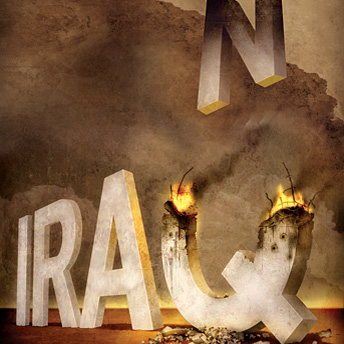“Our problems stem from our acceptance of this filthy, rotten system.”
― Dorothy Day
On April 4, 1967, exactly one year before Martin Luther King Jr. was murdered, he spoke passionately in a sermon at Riverside Church in New York about the war in Vietnam. In this gripping speech about the hypocrisy of bringing democracy through napalm and the audacity of fostering a brotherhood through war and killing, he made a daring confession: “I could never again raise my voice against the violence of the oppressed in the ghettos without having first spoken clearly to the greatest purveyor of violence in the world today —my own government.”
The most significant social movement in the US in the coming months will be the Occupy movement, as it returns in some numbers to the street. As the Occupy movement grows more polarized between strategies in light of its upcoming spring activities, it might do well to reflect on the logic of Dr. King’s brave statement. Contrary to what Peter Gelderloos and others have claimed, it is violence and the stasis of a dysfunctional system of oppression that protects the state, not nonviolence. How does violence protect the state? Do a few general internet searches on the Occupy movement in images to see how that movement is visually narrated (not to mention how it feels to see the portrayed reduction of a promising national movement into a series of police confrontations).
Examining these images with some detachment, we might wonder how this civil war with police began. This examination might also give us some clues about the general population’s confusion about “what Occupy wants,” and the US citizenry’s preference for political candidates who do not create violence on the streets—even if those elected officials ultimately maintain systems of greater violence within our society and between it and other nations. If the choice is between unruly demonstrations and elections, Occupy risks becoming a reason to turn to politics as usual.
Paradoxically, while the public will be fascinated by police/Occupy confrontations, and while the media will mock activists’ lack of moral character and strength for accepting violence as an effective strategy, it will only make the way safer and clearer for greater state violence to be perpetrated in the name of national security. Who knows, we may be pulled into a new war with Iran in the coming year —what better way to stifle a movement: delegitimize it (through violence), and then unite us against a common enemy!

Violence in opposition to the State relieves the State and the citizenry of any guilt for a brutal response to all protesters—and it refocuses from the nominal issue to the issue of violence by protesters. Thus any violence by protesters serves the state well (just ask anyone employed by the government who has hired an agent provocateur). It is a weapon of mass distraction. Stop worrying about the uptick in home foreclosures, the dead being shipped back from Afghanistan, and the new increases in the Pentagon’s proposed budget—look at the violent window-breakers from Occupy who threaten us all!
Just a few weeks ago, I was in dialogue with an official from the Pentagon’s weapons acquisitions team. In his final assessment (the conversation was about the present year’s National Defense Authorization Act and our Metta Center advocacy of alternatives to killing), our organization’s proposal of a nonviolent policy—a new U.S. policy of deep reconciliation to combat terrorism— “creates guilt, which is not good.” In other words, by repressing guilt, we can continue killing people.
Keep in mind that soldiers are committing suicide in higher numbers than ever before, and therefore we should pay attention to what this guilt is telling us. This mindset of denial echoed by the Pentagon official, integral to waging war, is rooted in a belief about ourselves as separate from one another—in other words, that we should be able to kill one another without remorse, which is the supreme superstition of a violent system. On the level of the Occupy movement, we might formulate it as a principle: activists cannot harm the actors of the State without harming our movement. The more we fight against the police, the more we are allowing ourselves to be seen as accepting violent tactics, the stronger we make the system we want to change, the deeper that system digs in its heels. The more we entertain the use of violence, or even create occasions where it can break out, the more violence is justified. Why? Because as Max Weber’s definition of the State suggests, it “upholds the claim to the monopoly of the legitimate use of physical force in the enforcement of its order.” Violence is the modus operandi of the State. To build a free society, we will have to use different means.
Nonviolence is not just protest, it is not simply occupying space and it is not just about adversarial confrontations; it’s about our humanity. Erica Chenoweth and Maria Stephan brilliantly document the power of civil resistance when it uses nonviolence as its means to replace leaders. We should read their work and others, but we should not be afraid of going deeper either; more than changing a certain regime at this time, we need to transform a culture.
In short, in order to delegitimize a violent system, we have to delegitimize violence.
This change requires us to adopt a principle about human beings and human dignity: we will not use violence against others because we want to create a vibrant culture, a merciful culture, a generous culture because we as human beings have the potential to nurture these qualities within ourselves and each other. We will not degrade human dignity because it is not worthy of ourselves as people; let this be the motivation for our long-term struggle. The power of the violent State system would stand much less chance against a movement committed to this nonviolent, compassionate spirit of unity.








